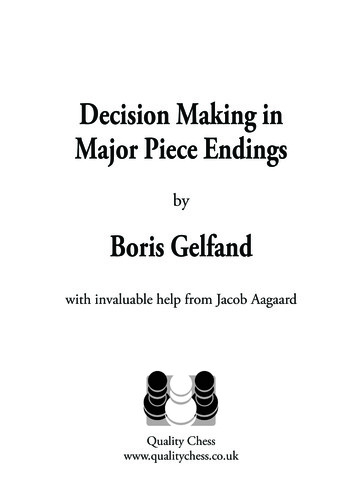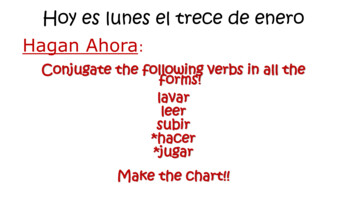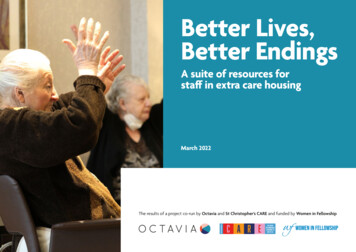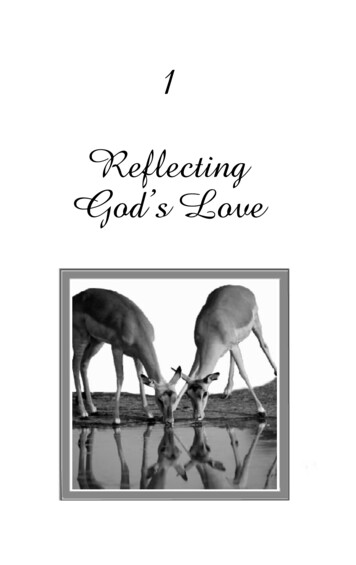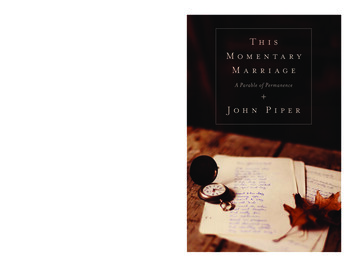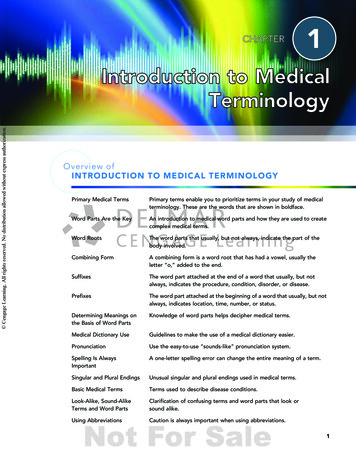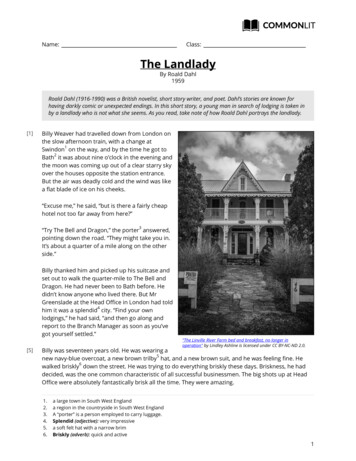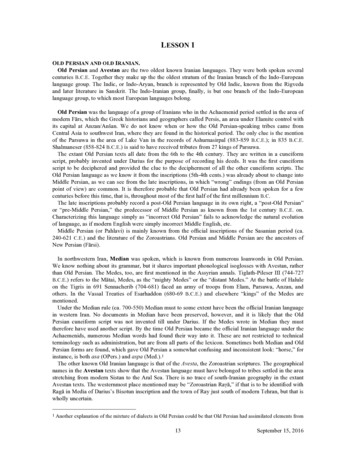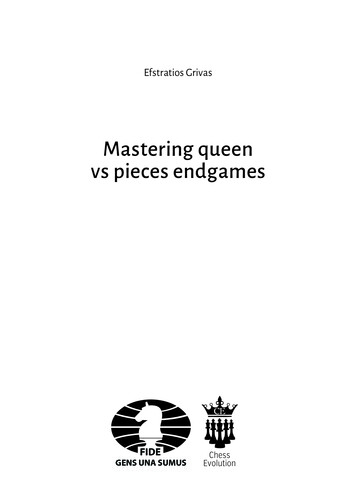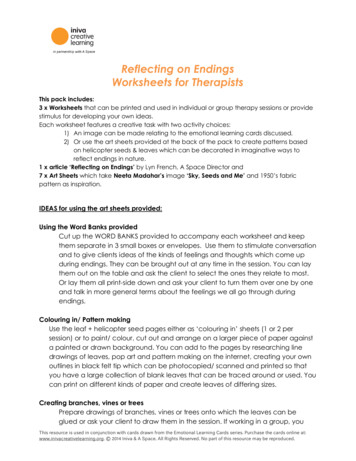
Transcription
Reflecting on EndingsWorksheets for TherapistsThis pack includes:3 x Worksheets that can be printed and used in individual or group therapy sessions or providestimulus for developing your own ideas.Each worksheet features a creative task with two activity choices:1) An image can be made relating to the emotional learning cards discussed.2) Or use the art sheets provided at the back of the pack to create patterns basedon helicopter seeds & leaves which can be decorated in imaginative ways toreflect endings in nature.1 x article ‘Reflecting on Endings’ by Lyn French, A Space Director and7 x Art Sheets which take Neeta Madahar’s image ‘Sky, Seeds and Me’ and 1950’s fabricpattern as inspiration.IDEAS for using the art sheets provided:Using the Word Banks providedCut up the WORD BANKS provided to accompany each worksheet and keepthem separate in 3 small boxes or envelopes. Use them to stimulate conversationand to give clients ideas of the kinds of feelings and thoughts which come upduring endings. They can be brought out at any time in the session. You can laythem out on the table and ask the client to select the ones they relate to most.Or lay them all print-side down and ask your client to turn them over one by oneand talk in more general terms about the feelings we all go through duringendings.Colouring in/ Pattern makingUse the leaf helicopter seed pages either as ‘colouring in’ sheets (1 or 2 persession) or to paint/ colour, cut out and arrange on a larger piece of paper againsta painted or drawn background. You can add to the pages by researching linedrawings of leaves, pop art and pattern making on the internet, creating your ownoutlines in black felt tip which can be photocopied/ scanned and printed so thatyou have a large collection of blank leaves that can be traced around or used. Youcan print on different kinds of paper and create leaves of differing sizes.Creating branches, vines or treesPrepare drawings of branches, vines or trees onto which the leaves can beglued or ask your client to draw them in the session. If working in a group, youThis resource is used in conjunction with cards drawn from the Emotional Learning Cards series. Purchase the cards online at:www.inivacreativelearning.org. 2014 Iniva & A Space. All Rights Reserved. No part of this resource may be reproduced.
might choose to create a large tree for all the leaves. Use the leaf pages tocopy from to make smaller leaves. Use different paper for the leaves (eg. makeone branch/ vine/ tree with tissue paper leaves, another with gold silver and a3rd one with leaves that have been painted.) Create a small forest of trees or aseries of vines which can be joined together.Creating a backdrop reflecting ‘emotional weather’Ask your client to make a series of abstract paintings to illustrate ‘emotionalweather’ (eg. stormy, calm, rainy etc). While these ‘weather paintings’ aredrying, make a series of trees, some with leaves, some with leaves swirling in thewind, some bare etc which can be glued onto the paintings once dry. Or haveavailable printed images of trees in different seasons to be cut out and glued on.This work captures the unsettled emotions we all feel around endings.Symbolic ‘containers’Ask your client to colour/ paint a selection of leaves from the sheets providedand cut them out. Divide them into two sets. Write on the back of the leaves inset 1 difficult or uncomfortable feelings associated with endings and on set 2,good memories of endings including current achievements and gains. Createtwo boxes or decorate 2 envelopes, one for difficult feelings and one for goodmemories personal gains. The client can take away one or both at the end.This resource is used in conjunction with cards drawn from the Emotional Learning Cards series. Purchase the cards online at:www.inivacreativelearning.org. 2014 Iniva & A Space. All Rights Reserved. No part of this resource may be reproduced.
Reflecting on Endings Worksheet 1: Looking Back on BeginningsRESOURCES: Print off 1 or 2 of the art sheets included at the end of this pack. You can also choose toadd to the selection of leaves and seeds. Feelings memories can be written in/ around the leavesusing the Word Bank provided on the theme of Beginnings or leaves/ seeds can be cut out and wordswritten on the reverse. If you are using art, the leaves can be painted and decorated. (refer to the‘Ideas’ page for tips). IMAGES FEATURED: Doris Salcedo Noviembre 6 y 7 from ‘Who are you? Where areyou going?’ & Neeta Madahar Sky, Seeds and me from ‘What do you feel?’INTRODUCTIONEndings occur naturally throughout the life cycle. Our time as babies comes to an end and wegrow into small children. We start and finish primary school before transferring to secondaryschool, going onto college, getting a job and so forth. The endings which mark each phase ofdevelopment are shared by everyone.Each of us will experience other endings too. Forexample, people important to us move on or die. We might leave a familiar neighbourhood,home, school or place of work and have to start again, making new friends and getting used tonew routines. Some endings are expected while others take us by surprise. We all have areaction to endings, especially those which trigger feelings such as sadness, anger, fear ordisappointment. Over the next few weeks, we’ll be thinking about the common thoughts andfeelings associated with endings.USING ART TO EXPLORE FEELINGSThere is no right or wrong way to interpret art. All art brings up feelings and ideas unique to eachof us. This artist, Doris Salcedo, has created a series of images of chairs hung on the outside wallsof a tall building. In the first photograph, there is only one lone chair but by the end of the series,the walls are crowded with them. One way of reading this art work is to see it as capturing theexperience of starting something new. At first, we might feel isolated and very much on our ownlike the solo chair in Salcedo’s first picture before we gradually find our place amongst others.Feeling we are part of a community is important as it give us a sense of belonging.WHAT DO YOU FEEL?When we know an ending is coming up, it is helpful to look back so that we are reminded of what itwas like at the beginning. Why have we been meeting every week? What did you feel about seeing me when we first started? Have your feelings changed? Describe other beginnings (eg. first day at school; first time you met a baby sibling etc).CREATIVE EXERCISEIn nature, seasons have a beginning, middle and end just like life. Trees symbolise the life cycle:their leaves come up as buds then grow to full size before drifting to the ground where theygradually disintegrate. In spring, the tree’s life begins again. This reminds us that beginnings andendings are interlinked. Renewal is part of the life cycle. Neeta Madahar’s image captures this.She has photographed a tree’s seeds whirling through the sky. Over the next few weeks, we canuse nature to symbolise beginnings and endings. For example, you can make leaves using theshapes provided or draw your own and decorate them with patterns or words related to endings.Or you might want to use another approach. Reflecting on today’s theme of beginnings, youcould follow Doris Salcedo’s lead and draw a comic strip or story board featuring chairs in aroom or around a table with the number of chairs increasing or decreasing to represent peopleThis resource is used in conjunction with cards drawn from the Emotional Learning Cards series. Purchase the cards online at:www.inivacreativelearning.org. 2014 Iniva & A Space. All Rights Reserved. No part of this resource may be reproduced.
coming into our lives and leaving. Use some of the words from the WORD BANK to supportlearning about the common feelings and thoughts we all have around beginnings.WORD BANK 1 Looking Back on Beginnings: Common Thoughts & FeelingsUse the thoughts and feelings outlined below or come up with your own to help in identifyingcommon responses to starting something new.Common reasonswhy young people oradults see someonelike meTo learn aboutfeelings in generalTo express difficultfeelings throughtalking, making art &creative playTo feel moresettled insideTo explorefeelings &thoughts aboutschool lifeTo explorefeelings &thoughts aboutfamily lifeTo explore feelings &thoughts aboutfriendshipsTo explore verypersonal feelings& thoughts aboutoneself & one’slifeTo learn to trustTo improveconfidenceTo build the capacityto concentrateTo make positivechangesTo experimentwith a new kindof relationshipTo feel lessanxious orstressedWe might feel:To cope better withchange & lossTo understandangry feelingsNERVOUS as if we are‘under a spot light’DOUBTFUL – willthis make adifference?Common feelings&thoughts which comeup when we startsomething newSHY & SELFCONSCIOUSEXCITED – it’sinteresting totry somethingnewCONFUSEDwhat’s itall about?CURIOUS – this issomething differentANGRY- why do Ihave to come?UNCERTAIN- notknowing whatto expectDISTRUSTFUL – isthis goodor bad?UNCOMFORTABLE – Idon’t like being thecentre of attentionHOPEFUL - I maygrow & developin a positive wayThis resource is used in conjunction with cards drawn from the Emotional Learning Cards series. Purchase the cards online at:www.inivacreativelearning.org. 2014 Iniva & A Space. All Rights Reserved. No part of this resource may be reproduced.
Reflecting on Endings Worksheet 2: Past GoodbyesRESOURCES: Print off 1 or 2 more of the art sheets included at the end of this pack. You can also add tothe selection of leaves and seeds. Feelings thoughts can be written in/ around the leaves using theWord Bank provided on the theme of Past Goodbyes or leaves/ seeds can be cut out and words /memories written on the reverse. If you are using art, the leaves can be painted and decorated, addingto those already made, or creating a new piece of work. (Refer to the ‘Ideas’ page for tips). IMAGESFEATURED: Zarina Hashmi Homes I Made / A Life in Nine Lives from ‘Who are you? Where are you going?’& Neeta Madahar Sky, Seeds and me from ‘What do you feel?’.INTRODUCTIONEndings take different forms. They may be expected such as the end of a holiday or another yeardrawing to a close. Or they might come as a surprise or even a shock. For example, we mightfind out that someone important to us is moving away or a member of our family is leaving.Perhaps someone we know has died or we have lost a family pet. When these kinds of endingshappen, we might not have time to prepare. Making sense of past endings, especially thosetimes when there hasn’t been the chance to think about them or to say a proper goodbye, is ahelpful way to come to terms with the kinds of losses in life that we all experience at some pointor another.USING ART TO EXPLORE FEELINGSZarina Hashmi’s framed prints show us floor plans illustrating different kinds of homes. There is onemissing near to the top. Perhaps this conveys the idea that we might have to move home even ifwe don’t want to, leaving us with a sense of loss. Or perhaps the empty space in the middle of therow suggests that the people who make where we are living feel like home have moved on or evendied.WHAT DO YOU FEEL? What is your earliest memory of saying goodbye?Have you moved home or school or has a friend moved - what feelings came up then?Describe times when you said goodbye to people important to you. Who were they? What didyou feel like then? What do you feel like now, looking back on that time of your life?Have you said goodbye to a person or place you knew you’d never see again? Have yourparents moved home or country? What thoughts or feelings might come up when we know wemay never return?CREATIVE EXERCISEYou might want to continue to build on the theme of nature, following Neeta Madahar’sexample. (Look again at her image entitled ‘Sky, Seeds and Me’.) If you’ve already madesome leaves, you can add to your collection or begin anew. There is no right or wrong way toapproach your art making. our leaves or trees can include patterns or colours not found innature. You can arrange them against a blue background to suggest falling leaves, followingthe example of Neeta Madahar, or make a pattern with them or place them on a circularwreath or on a vine, branch or tree. Perhaps you want to keep them as a collection of individualleaves and make an envelope or a small box to put them in if you haven’t done so already.Alternatively, you can use another creative approach. For example, reflecting on today’s themeof past goodbyes, you may choose to follow Zarina Hashmi’s example and draw a series ofimaginary floor plans or houses which capture those places where people you’ve said goodbyeThis resource is used in conjunction with cards drawn from the Emotional Learning Cards series. Purchase the cards online at:www.inivacreativelearning.org. 2014 Iniva & A Space. All Rights Reserved. No part of this resource may be reproduced.
to have lived or where you’ve lived before. Use some of the words from the WORD BANK on thenext page to support learning about common feelings we all have around saying goodbye.WORD BANK 2 Saying Goodbye: Common Thoughts & FeelingsUse the thoughts and feelings outlined below or come up with your own to help in identifyingcommon responses to saying goodbye to people or places.SAD & TEARFUL- wemay never meetagain (or we maynever go back thereagain)ANGER – why dowe have to saygoodbye to peopleand to familiarplaces?GOOD TIMING –I’m readyto move onRELIEF – I’ll leavebehind somedifficultexperiencesSHOCK – I didn’t knowthat an ending wascomingFEAR- will I managewhen they’regone?CONFUSION – will Isee them (or thatplace) again?WORRY – have theygone forever?DISAPPOINTMENT – Ididn’t think(teacher/ parent/friend/ relative)would leaveFeeling ‘erased’ – Idon’t trust that I’llbe rememberedFeeling angry – yetanother unwantedgoodbyeFeeling left behindAccepting thatchange happensFeeling ready for anew beginningHaving newopportunitiesFeeling hopeful – wewill meet againReady to startagainLooking forwardto newrelationshipsGood memorieslast foreverLife is made up ofbeginnings &endings andhello’s &goodbyesThis resource is used in conjunction with cards drawn from the Emotional Learning Cards series. Purchase the cards online at:www.inivacreativelearning.org. 2014 Iniva & A Space. All Rights Reserved. No part of this resource may be reproduced.
Reflecting on Endings Worksheet 3: Acknowledging Achievements & GainsRESOURCES: Print off 1 or 2 more of the art sheets included at the end of this pack and make availableany other leaf, seed or tree shapes you’re created or downloaded. The client can continue to developtheir work in the style already underway or try a different approach. The Word Bank provided on thetheme of achievements & gains can be used to help you and your client identify what has changedand what insights or new self-beliefs they are taking away from their sessions with you. IMAGESFEATURED: Shirin Neshat Bonding from ‘How do we live well with others?’ & Neeta Madahar Sky, Seedsand me from ‘What do you feel?’INTRODUCTIONRelationships are an important part of life. Our first experience of interacting with others starts inthe family before we begin to make relationships of our own outside of the home. The word‘relationship’ comes from ‘relate’. Relating to others includes doing things together, talkingtogether and sharing aspects of our personal life with others. Relating in this way helps us to feelconnected and gives us a sense of belonging. It also supports us in learning about ourselves andunderstanding that we all share similar feelings even if our life experiences differ.WHAT DO YOU FEEL?In everyday life, we don’t usually get the chance to prepare for endings or to identify what we havegot from our relationships. Today we are going to look together at the ways in which you havebenefitted through meeting with me. We’ll be thinking about how you have developed during ourtime together, what’s changed for you and what you have gained. Let’s reflect again on why you and I have been meeting. What has changed since we firstbegan? What are your best memories of coming here? What did you like least? How have you developed as a person since coming here?We are better prepared for the future if we:Accept that beingHold in mind a positiveopen to newsense of self andexperiences takesaccept who we arecourageKnow that it takescourage to have newrelationships and newexperiencesKnow that we canchange the way we seeourselves and the worldaround usRecognise our strengthsand build on themRemember that leavingthe familiar behind canbe a little scary foreveryoneAccept that we all havedifficult feelings fromtime to time but that wecan manage them orask for helpAccept that endingsare a part of lifeCREATIVE EXERCISEIf you have been working on the theme of nature, taking Neeta Madahar’s image as a startingpoint, you might want to make a new set of leaves to capture your personal gains andachievements, using the WORD BANK to help you.Alternatively, you can use a different creative approach. For example, reflecting on today’stheme of relationships and what we gain from them, you may choose to follow Shirin Neshat’slead and draw a series of hands in different sizes or just trace your own a number of times. Cutthem out and arrange them on another piece of paper so that they are touching or nestledtogether to represent relationships. Write in the hands what you’ve gained from coming here. Usethe WORD BANK provided to help you with this.This resource is used in conjunction with cards drawn from the Emotional Learning Cards series. Purchase the cards online at:www.inivacreativelearning.org. 2014 Iniva & A Space. All Rights Reserved. No part of this resource may be reproduced.
WORD BANK 3 Common Ways in Which We Gain From Meaningful Relationships with OthersUse the thoughts and feelings outlined below or come up with your own to help in identifyingthe ways in which we grow and develop through our relationships with others.Being more ableto communicatemore honestly &more freelyFeeling morecomfortable insideUnderstandingfeelings betterBuilding ourconfidenceFinding out newthings aboutourselvesUnderstanding ourcurrent and pastlife betterHaving a morepositive self-image& discoveringwhat makes usuniqueLearning how toexpress ourselvesfreelyGetting used toforming arelationship withsomeone newShowing courageby continuing withthe relationshipeven when it feelsunfamiliar ordifficultLearning totrust othersBeing open tonew experiencesBeing prepared totry again whenthings don’t workoutLearning to takerisksFeeling things aregoing better in ourlives in generalHaving a betterrelationships withfamily membersor teachersFeeling morerelaxedHaving betterrelationships withour peersBeing able toconcentrateFeeling we arevaluedLearning that wecan cope withchangeLearning aboutfeelings – thegood ones andthe difficult onesLearning how tomake sense ofpast experiencesAccepting thatwe all have gooddays & bad daysThis resource is used in conjunction with cards drawn from the Emotional Learning Cards series. Purchase the cards online at:www.inivacreativelearning.org. 2014 Iniva & A Space. All Rights Reserved. No part of this resource may be reproduced.
Reflecting on Endingsby Lyn French, A Space Director, Counsellor and psychoanalytic psychotherapistThinking about endings brings up related subjects such as how we view time. In this text which has beenfeatured as a blog on the Iniva Creative Learning website, I reflect on the theme of time passing, andour relationship to it. The ideas explored can help you in your preparations for finishing sessions withclients and in processing your own response to endings.In everyday life, time marks out the minutes, hours and days of our week. Maybe we imagine time is onour side and we have the luxury of going at our own pace without being under pressure to rush. Inother instances, time can feel persecuting, as if it’s going to run out before we can accomplish what weset out to do. We learn about time in our earliest months when, as infants, a delay in our needs beingmet brings into being a ‘felt awareness’ or an ‘embodied knowledge’ of a time lag between desire andits fulfilment. In some instances, our infantile frustration at having to wait will have been tinged with aprimal dread that our cries might go unnoticed, threatening our very survival. No mother can be everpresent for her baby nor would it be helpful – we need to become aware that there is an ‘other’ who isseparate from us and on whom we are dependent so that the scene is set for learning to relate to thosearound us. The absent mother, when experienced in manageable ‘doses’, lays the foundation fordeveloping a concept of time and an awareness of separateness. The need to develop a repertoire ofsounds and signals in order to communicate is stirred and the first sign of ‘language’ begins to evolve.Studies show that babies do not simply communicate hunger or the need to be changed but express awish to relate to, and engage with, the mother in part to generate a feeling of connectedness tocounteract the ‘alone-ness’ that comes with feeling separate.In later years, our relationship to time is influenced by the interplay between factors rooted in the ‘hereand now’ and our emotional geography. The latter comprises the layers of experience we haveamassed, each conscious or unconscious ‘memory’ embedded with emotionally charged psychicmaterial dating from infanthood onwards. For those who have enjoyed ‘good enough’ earlyexperiences of feeding, weaning, separation and loss, waiting for gratification or for ‘time to tell’ is not sointolerable. At the other end of the spectrum are those for whom the reality of frustration, ratcheted upby the unconscious fear of being left abandoned with needs unmet, came too soon and toofrequently, leaving a reservoir of terror often hidden under a thin crust of anger. Calling out in the darkwhen there is no corresponding reply brings to mind Bani Abidi’s photograph entitledIntercommunication devices, 2008. Speaking into an intercom, anticipating a response but receivingnone, can be disappointing or worse, echoing one’s earliest experiences of searching for a connection.Implicit in our concept of time is the unavoidable fact that all which begins also ends. In common withthe woman in Sonia Boyce’s pastel and ink drawing Big Women’s Talk / She aint holding them up, she’sholdin on (some English Rose) 1984/5, we all carry memories of times past, especially those rooted infamily, and we re-shape these memories as the years advance. Maybe the end of childhood, forinstance, is now seen as marked primarily by losses rather than gains. Gone are the moments ofcarefree play and excited exploration, replaced by long school days defined by learning, sitting testsand encountering social challenges with peers. Or perhaps childhood’s end brings the pleasure derivedfrom increased independence and the chance to try to shape our own destiny. For some, moving onfrom childhood into adolescence is a welcome relief as distance can be placed between oneself andother members of the family which may be the only way painful, conflicted or confusing relationshipscan be managed or even survived. Many of us may have been called upon to provide emotionalsupport for vulnerable parents, propping them up, or have simply ‘held on’ until such time as we canleave home and carve out our own lives. Our perceptions of childhood, and what the transition intoadolescence signifies, will be coloured by how we remember the past which, in turn, will , to someextent, determine what we project into the future.This resource is used in conjunction with cards drawn from the Emotional Learning Cards series. Purchase the cards online at:www.inivacreativelearning.org. 2014 Iniva & A Space. All Rights Reserved. No part of this resource may be reproduced.
None of us can shed our past but it does not have to hold us in its grip. We can look back on it and gainan understanding of the bigger picture. Sudhir Patwardhan’s image Family Fiction 2010 reminds us thatwe all create stories about our family members and our relationships. For example, if our father leftwhen we were young and has not maintained contact, we might explain this by convincing ourselvesthat we are of little interest or value and even ‘unloveable’. This story can harden into a core beliefeither consciously or unconsciously and colour the image we project of ourselves throughout theremainder of our lives. Alternatively, we can try to figure out why a father might leave and never return.Perhaps the guilt he feels about not being able to sustain a healthy relationship with our mother is toogreat to be borne. Or he might have been abandoned himself in early years and simply not know howto be a father. Perhaps he is compelled to ‘keep moving’ to hold at bay unconscious fears andanxieties. Whatever the psychological context, which we may never uncover, there will always be anemotional subtext. No one sets out to be an absent father but is usually driven into this position byunconscious forces which will have a powerful emotional content. If we place ourselves centre stage inthe stories we create about our family relationships, we may risk living out a life built on a verydisempowering self-image based purely on speculation and ‘fictionalised’ stories we tell ourselves.To further complicate matters, many of us idealise what we feel we’ve missed out on. If, for example, wehaven’t had a father available to us, or if we had adoptive or foster parents, we might hold onto a rosetinted picture of what being a member of a ‘real’ family might be like. Perhaps we imagine therelationship between a birth parent and a child being one defined by intuitive attunement and mutuallove as Shirin Nesha’s photograph Bonding, 1995 seems to depict. However, Nesha’s image captures amoment in time, not a continuous ‘flow’. If we romanticise what we haven’t experienced ourselves, wemay end up looking for the ideal relationship later in life to compensate for what we feel we’ve lacked.This can lead to unrealistic expectations, inevitable disappointment and a perpetual feeling that wehave been left behind. All of us have to work through the ending of childhood illusions. Life isn’t assmooth or as seamless as our fantasies might have us believe or as some advertising images or accountsof celebrities’ lives might construct.We can idealise times of the year as well as relationships. As the summer months draw nearer, we arereminded of how holidays conjure up seductive images of endless sunny days symbolising freedom,pleasure-seeking and relief from work. We all carry memories of the end of the school year andremember the excitement it stirs up. However, what can be forgotten are the goodbyes we’ve said tofavourite teachers, the loss of daily structures and the fractious moments that can arise between siblingsor friends when boredom inevitably sets in. Summer may bring relief from the cold of winter and the wetdays of spring but the ‘emotional weather’ continues regardless of where we are and how we arespending our holidays. ‘ Most of us yearn for the ‘perfect family vacation’, forgetting that relationshipsstill feature ups and downs no matter how idyllic the setting or the weather! Mixed conditions’ are boundto be the order of the day.This resource is used in conjunction with cards drawn from the Emotional Learning Cards series. Purchase the cards online at:www.inivacreativelearning.org. 2014 Iniva & A Space. All Rights Reserved. No part of this resource may be reproduced.
Art Sheet 1This resource is used in conjunction with cards drawn from the Emotional Learning Cards series. Purchase the cards online at:www.inivacreativelearning.org. 2014 Iniva & A Space. All Rights Reserved. No part of this resource may be reproduced.
Art Sheet 2This resource is used in conjunction with cards drawn from the Emotional Learning Cards series. Purchase the cards online at:www.inivacreativelearning.org. 2014 Iniva & A Space. All Rights Reserved. No part of this resource may be reproduced.
Art Sheet 3This resource is used in conjunction with cards drawn from the Emotional Learning Cards series. Purchase the cards online at:www.inivacreativelearning.org. 2014 Iniva & A Space. All Rights Reserved. No part of this resource may be reproduced.
Art Sheet 4This resource is used in conjunction with cards drawn from the Emotional Learning Cards series. Purchase the cards online at:www.inivacreativelearning.org. 2014 Iniva & A Space. All Rights Reserved. No part of this resource may be reproduced.
Art Sheet 5This resource is used in conjunction with cards drawn from the Emotional Learning Cards series. Purchase the cards online at:www.inivacreativelearning.org. 2014 Iniva & A Space. All Rights Reserved. No part of this resource may be reproduced.
Art Sheet 6This resource is used in conjunction with cards drawn from the Emotional Learning Cards series. Purchase the cards online at:www.inivacreativelearning.org. 2014 Iniva & A Space. All Rights Reserved. No part of this resource may be reproduced.
Art Sheet 7This resource is used in conjunction with cards drawn from the Emotional Learning Cards series. Purchase the cards online at:www.inivacreativelearning.org. 2014 Iniva & A Space. All Rights Reserved. No part of this resource may be reproduced.
2) Or use the art sheets provided at the back of the pack to create patterns based on helicopter seeds & leaves which can be decorated in imaginative ways to reflect endings in nature. 1 x article ‘Reflecting
